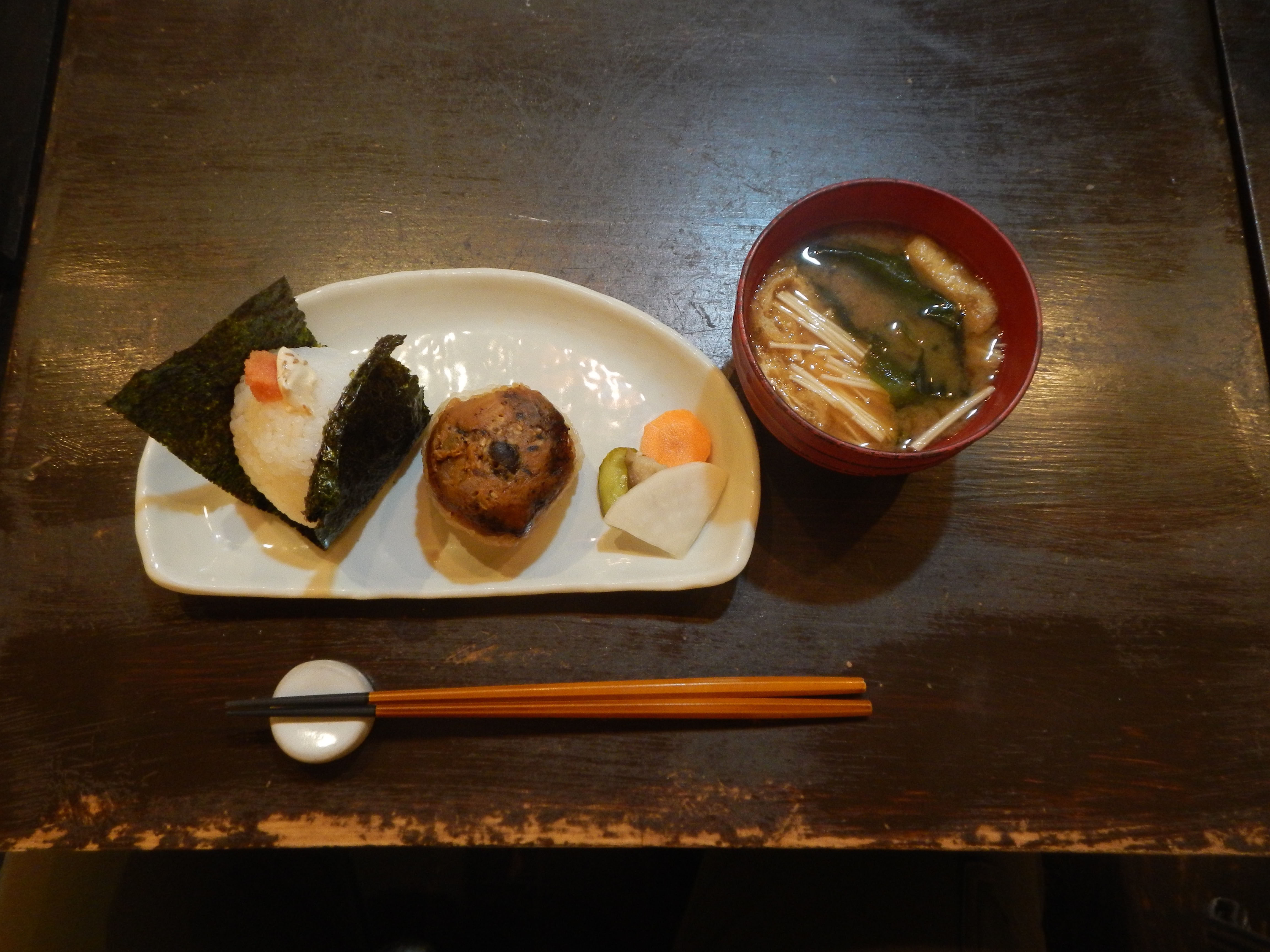The humble onigiri is a sandwich-like rice ball with savory fillings that makes for a quick breakfast. Rounded out with miso soup, an omelet and some vegetables, it becomes a great morning meal.
Its rich history can be dated back almost 2,000 years to the Yayoi Period (200 B.C. to A.D. 250) when we see reference to grilled rice balls made from sticky rice. In the Nara Period (710-794) the word nigiri-ii is used for packed rice. Tonjiki refers to rice balls for picnics during the Heian Period (794-1185). Samurai ate umeboshi (pickled plum) rice balls during the Kamakura Period (1185-1333). We don't see nori being used as a wrapper until the Edo Period (1603-1868). The first ekiben (train station bento box), sold at Utsunomiya Station, consisted of two umeboshi rice balls studded with black sesame seeds with a side of pickled daikon all wrapped in a dried bamboo leaf.
As far as terminology goes, omusubi refers to triangle-shaped balls while onigiri can be any shape.

















With your current subscription plan you can comment on stories. However, before writing your first comment, please create a display name in the Profile section of your subscriber account page.